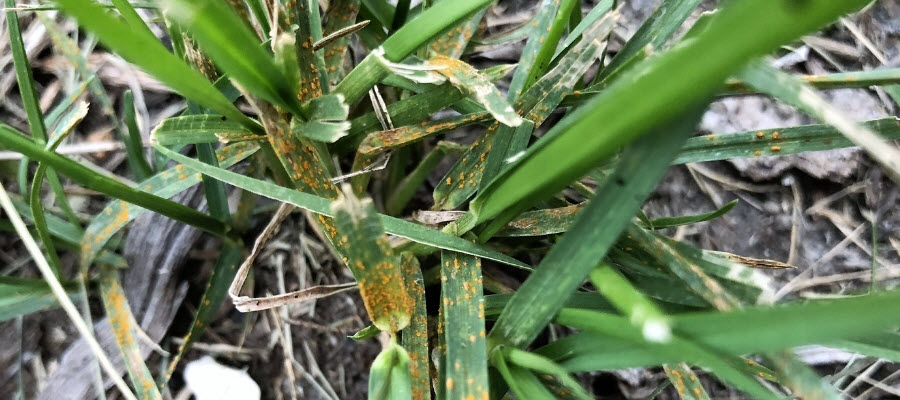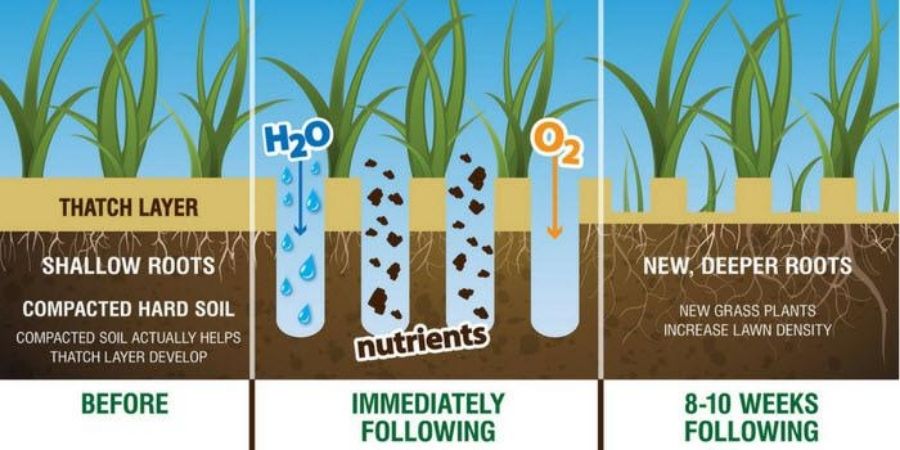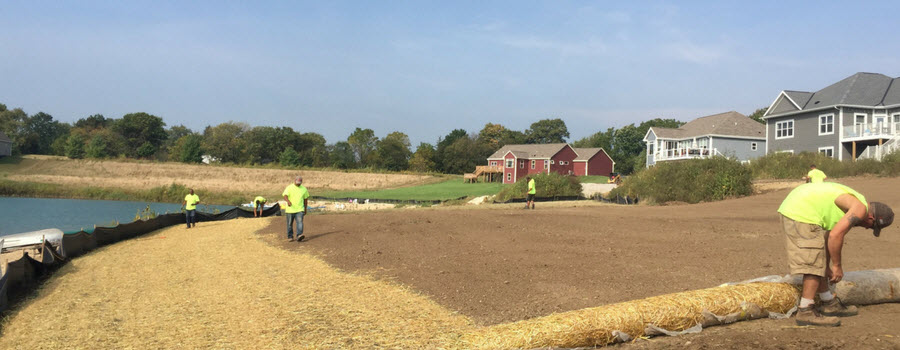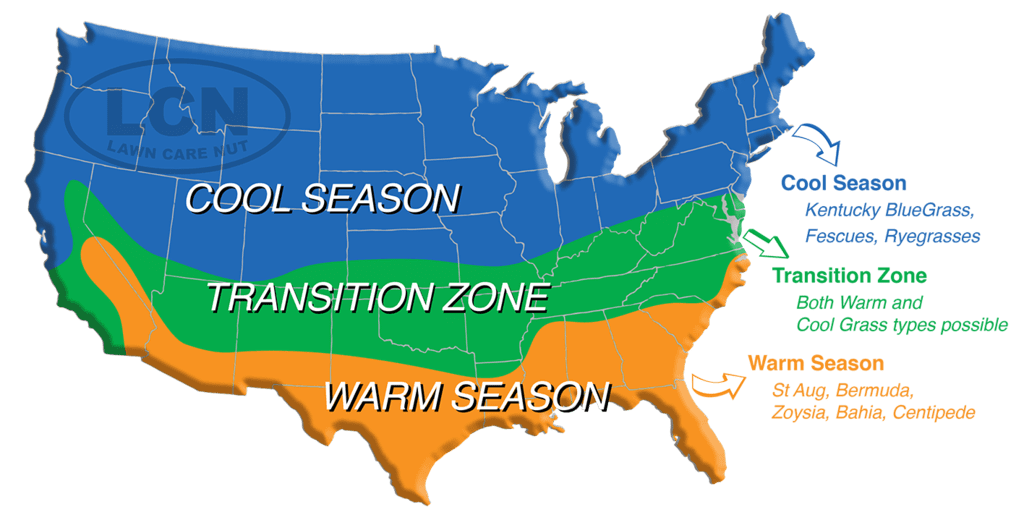Lawn Renovation for Your Budget
- Milorganite AgronomistJune 12, 2021
Choose the best option for you, your yard, and your budget.
If your lawn is looking sad, sickly, or just plain tired, it’s time to rejuvenate the struggling areas of your yard or renovate by clearing out the existing lawn and starting from scratch. The approach you choose depends on what you want your lawn to look like, your budget, how much time you have to dedicate to the process, and the degree of sweat equity you’re willing to put in.
Rejuvenation will take care of bare spots and other damaged areas on a budget. If you can’t get to the entire yard in one season, consider doing one section of the yard at a time, such as the front yard this season and the back yard next season.
If your lawn is more than 50-60 percent weeds a complete renovation is recommended. Renovating your yard—starting from scratch—requires more time, labor, and money to clear away the existing lawn and throwing down seed or laying sod.
Three Budgets, Three Options of Lawn Rejuvenation or Renovation
I’m sharing three levels of lawn rejuvenation and renovation based on your budget and available time. The table shows you what needs to be completed for each option.
| Activity | Budget Friendly | Mid-Range | Complete Renovation |
|---|---|---|---|
| Identify the Problem | x | x | x |
| Treat for Weeds | x | x | x |
| Overseed | x | x | x |
| Fertilize | x | x | x |
| Soil Test | x | x | |
| Dethatch | x | x** | |
| Aerate | x | x** | |
| Top-dress/add organic matter | x | x | |
| Kill lawn | x | ||
| Till for amendments and organic matter | x | ||
| Seed, Sod or Sprig | x |
* Please note: the activities listed in the table above are not necessarily in the order of execution.
**If you are doing a total renovation, removing all the existing lawn, and plan to till, you don't need to dethatch or aerate. If you are not tilling, then I would suggest aerating to loosen the soil.
Equipment: Buy, Rent or Borrow
Before we get started on identifying the activities, you’ll have to see what kind of equipment you have. You’ll need a variety of tools and power equipment to rejuvenate or renovate your lawn. Take note of what you’re going to need so you have the right tool for the job when you need it.
If you plan on purchasing new equipment, look for sales to save money. Rent power equipment you will only use infrequently, such as a dethatcher or aerator, from a big-box store or a tool and equipment rental center.
Check your local Goodwill or thrift store, online classifieds, and rummage sales for really cost-effective used tools. Milorganite customer Robert W., of Davenport, Iowa, hit the “used-equipment jackpot” when he found a spreader for only $5!
Don’t be afraid to borrow tools and equipment if you need to conserve your budget. Look to a neighbor, friend, or family member you’re on good terms with who has a healthy lawn—they likely have the tools and equipment to keep it well maintained, too. They’ll probably be a source for free lawn care advice, just make sure it’s reliable advice.
Items I recommend purchasing because you’ll be using them on a regular basis:
- Lawnmower
- Steel “bow” rake
- Plastic rake
- Spreader, drop, or rotatory
Even those dedicated to maintaining a lush, green lawn generally won’t have the following equipment on hand. Rent the following, because you will only need them periodically:
- Sod cutter
- Aerator
- Dethatcher
- Rototiller
- Lawn roller
Identify the Problem: Why does your lawn need to be renovated?
Before you can fix the problem, you have to identify the problem. There are many reasons why a lawn may need help. It could have bare spots caused by any number of problems, including diseases and dogs. Soil pH level that’s too high or too low. Too much sun or too much shade. Too much water (problems with poor drainage and puddling) or too little water (drought). Compacted soil. Pest damage. Weeds that have overrun 50-60 percent or more of the lawn. Or your yard simply looks neglected and tired. Address the problems you’ve identified before moving forward.

Soil Test
Having the soil tested is a step most homeowners neglect, yet it’s very easy to do and provides the information you need to grow a healthy lawn.
Determine soil fertility and pH level with a soil test, either a store-bought DIY kit or by sending samples out for analysis, which I recommend. Contact your local University Extension Service or state certified soil testing lab for details. There may be a small fee. The test results will indicate the nutrients and supplements the soil needs to support a healthy lawn.
Treat for Weeds
Consider how comfortable you are with a few weeds in your lawn when choosing your level of rejuvenation or renovation. You decide the degree of weed control for the first two levels of rejuvenation. For a complete renovation, everything goes, so treating weeds isn’t a problem.
My first defense would be to either pull weeds by hand, if there aren’t too many, or to spot treat weeds using a prepared herbicide. I try to keep chemical inputs to a minimum, but sometimes they're necessary when it comes to weeds.
If your lawn has a significant number of weeds—about 50 percent or more of your lawn—and you’re not doing a full renovation, use a selective herbicide or weed-and-feed (herbicide and fertilizer) product. Follow manufacturer instructions and community guidelines.
Dethatch and/or Aerate
Your biggest expense when dethatching and aerating your lawn is time and sweat equity. I’m not going to lie, they’re labor-intensive tasks. You’ll need to rent a gas-powered dethatcher and aerator from your area big-box store or tool and equipment rental center. Early fall is the best time of year to dethatch, aerate, and seed. The lawn needs time to recover and grass needs to be well established before cold weather blows in.
Thatch is a barrier created by dead grass that can, if it’s too thick, make it difficult for water, air and nutrients to reach grassroots. Excess thatch will keep grass seed from making contact with the soil. The seeds may germinate, but they’re not going to survive.
Dethatching rakes can be used for small areas, but for large areas, rent a power dethatcher. Dethatching removes more material than you ever thought your lawn could ever hide. Rake up debris after dethatching. Dethatching will also loosen the surface of the soil, just enough for seeding.

Aeration loosens compacted soil and allows air, water and nutrients to more easily reach the grassroots. There are two types of aerators you can rent: tine and core. I recommend using a core aerator, which removes plugs of soil and brings them to the surface.
Cut the lawn to 1” before dethatching or aerating. It’s easier to aerate when the soil is moist. If it’s been a while since the last rainfall, water until the soil is moist, not wet, the day before aerating.
Make multiple passes going in opposite directions when aerating your lawn. You can do this three or even four times over the entire lawn. The more holes the better. The cores left on the surface will look odd. You may even get comments from your neighbors. The cores eventually will break up and return to the soil. To expedite the process, after they dry out, you can also use a bow rake to break them up.
Overseed
Spring and fall are the best times of year to overseed your lawn. You can overseed every year until you reach the desired results. Overseeding is spreading grass seed directly into your existing lawn, without tearing up the turf, or the soil. It helps fill in spots that are bare and improve the density of your lawn.
Use a drop or broadcast spreader (recommended) to distribute the grass seed. Grass seeds are very small, so make the job easier by mixing the grass seed with Milorganite. It provides nutrients that won’t burn the seedlings and it will help you see where you’ve already seeded.
Fertilize
Maintaining a consistent fertility program will help create the lush, green lawn you’re working toward. Use a slow-release nitrogen fertilizer, such as Milorganite, which is also 85 percent organic matter. Every time you apply Milorganite, you’re adding both nutrients and organic matter to the soil.
Milorganite is non-burning so it won’t burn tender grass seedlings and provides nitrogen at a rate newly sprouted and established grass can use. If seeding a large area, or doing a complete lawn renovation and reseeding the entire lawn, we would recommend applying a starter fertilizer as well. The starter fertilizer will release its nutrients and start feeding right away as the seed is beginning to germinate and then the Milorganite will kick in around week two to feed the newly germinating seed for the long haul.
Topdress to Add Organic Matter
Topdressing adds needed soil and organic matter to enrich the soil and help level depressions in the yard. Every lawn will benefit from adding organic matter to the lawn which may include compost, composted manure, leaf compost, and peat moss, among other natural materials that will break down and condition the soil.
Mow the grass to about an inch when topdressing small areas. This allows soil and organic matter to reach soil level.
Apply no more than one-half inch of material at a time, gently raking to level the area. If an area needs more material to level an area, add it over a few months, adding only one-half inch of material at a time.
Starting with a Blank Canvas, Removing the Old Lawn
You may need to kill or remove portions of the lawn or the entire thing, depending on the extent of your renovation.
If more than 50–60 percent of your lawn is overrun by weeds, I recommend removing the entire lawn and starting from scratch. Think about it this way: If you killed all the weeds, is there enough grass to fill-in? If not, it’s time to renovate the entire lawn.
There are several natural methods to remove your lawn such as smothering it with newspaper or cardboard to clear grass and weeds from small areas. If you’re using a selective or non-selective weed killer you have to wait 3–6 weeks before seeding. For larger areas or the entire lawn, use a sod cutter or a non-selective herbicide—everything you spray will die—to remove the old lawn. Always read and follow all manufacturer instructions and community regulations when using herbicides.
Prepare the Soil
When preparing the soil for renovation I recommend adding Milorganite and at least an inch of organic matter, which may include compost, composted manure, leaf compost, and peat moss, into the top 6-8 inches of soil. Topsoil and organic matter are expensive and even one inch is going to be an investment. Add as much organic matter as your budget allows.
Adding Milorganite to the soil before seeding or sodding will help establish and feed the roots. Milorganite's salt-free formula will never burn tender new roots.
Sod, Plug, Sprig, or Seed
Now that you’ve completed prepping the bare areas or your entire yard, it’s time to sod, plug, sprig, or seed. Seeding is the most cost-effective means to a new lawn.
There are cool-season and warm-season grass varieties. Choose one or a blend that matches your region, climate, and growing conditions. Some grass varieties are only available as sprigs, plugs, or sod, such as St. Augustine Grass, a warm-season variety, because it’s very difficult to start by seed.
Sod
Sod provides instant gratification, but it comes at a very high cost. Sod is the most expensive method for establishing a new lawn. Install the sod yourself to save money, but it still takes time and a lot of brute energy. Enlist a few muscular helpers. Distribute knee pads.
Coordinate schedules so the sod is delivered on the day you plan on installing it. The sooner you lay sod the better. If you can’t finish in one day, either schedule partial shipments each day you’re able to lay sod or, if you have all of the sod you need to be delivered in one shipment, have the pallets of sod placed in a shady area. Keep it moist, but not wet. Sod is heavy enough on its own.
After the sod has been installed, make sure it has good contact with the soil by using a water-filled drum roller. Water to a depth of 2”.
Plugs
Plugs are 3”-square sections of sod and are planted at intervals and will grow together over time. Plugs are more cost-effective than sod but almost as labor-intensive.
Sprigs
Sprigs are planted end-to-end in troughs 6–12” apart. They’re less expensive than sod or plugs, but you’re not going to save time or labor. They will take more time to fill in compared to plugs.
Seed
Seeding is the least expensive method of rejuvenating or renovating your lawn. Choose high-quality seeds that will thrive in your area. A blend of grass varieties works well. Seed at the recommended rate, because too much seed creates competition among the seedlings.
Seeding
Spring and fall are the best times of year to seed your lawn. Ensure the seed has good contact with the soil by gently raking it in or tamp down the seed using the back of a rake. For an entire yard, use a water-filled roller. Cover the area using natural materials, such as straw, to keep the soil moist and don’t need to be removed. It will decompose and add organic matter to the soil.
Water regularly to keep the soil moist. It may be necessary to lightly water the lawn twice daily, especially in hot weather. After the lawn is established, water 1” per week in the absence of rain.
You can read my story of establishing a lawn from seed on a very large property. Don’t be scared off by my experience! I was dealing with some unexpected weather conditions that were detrimental to starting a lawn from seed.

My backyard: We used hay mats that were rolled out like carpeting and staked in place. The hay helps to keep the seed in place and the soil moist and cool—keys to success. There’s no need to rake up the hay; it’ll decompose and add organic matter to the soil.
Mowing a New Lawn
Start mowing when your grass variety reaches its optimum height. Mow to a height one-third higher than the recommended height for the grass variety you use. Make sure the mower blade is sharp. Dull blades can tear grass blades, leaving them more susceptible to disease.
After the new lawn has been mowed 3 times, mow at the recommended height for your variety of grass.
Resources for Reliable Information
Milorganite is a trusted resource for information on rejuvenating or renovating your lawn, along with many other topics. Posts on our Green and Growing Blog from our Milorganite partners: Allyn Hane, “The Lawn Care Nut”; Melinda Myers, horticulture expert, and author; and, Joe Lamp’l, host of Growing a Greener World.
You can also contact your local university extension service office, staffed by master gardeners, for free information specific to your area and guidance on any number of horticultural subjects.


